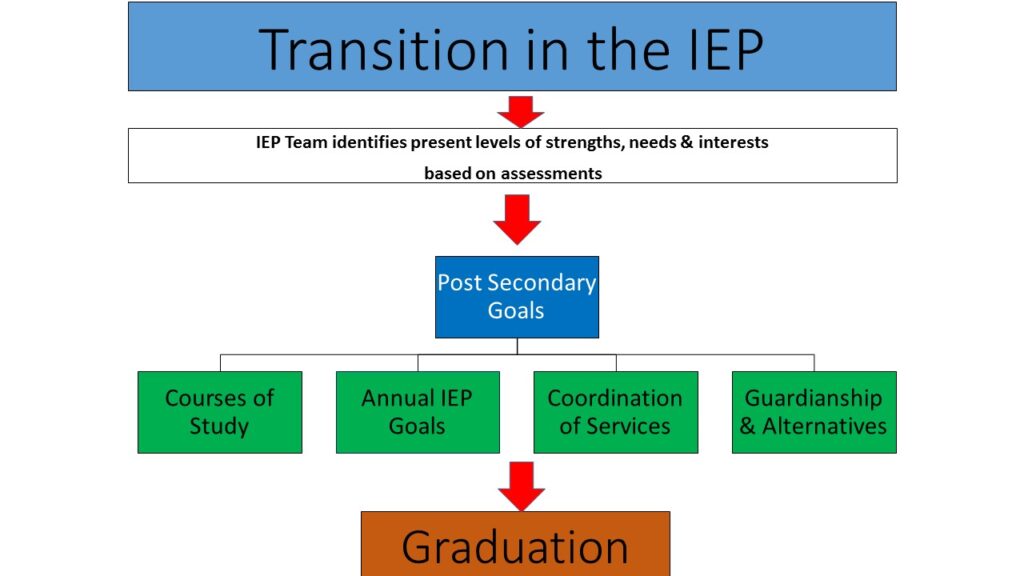Once the present levels of strengths, interests, preferences and needs have been identified through transition assessment, you and your child (along with other members of the IEP/ARD Committee) can identify post-secondary goals.
Post Secondary goals are different from Annual Goals.
Remember – According to IDEA, the IEP transition plan must include coordinated, measurable, annual, postsecondary goals related to:
- training, education: for a specific vocational or career field, apprenticeship, on the job training, 2-4 year college/university, Voc-Tech programs;
- employment: this can be paid (competitive, supported or sheltered), unpaid (internship), military, and
- where appropriate, independent living skills (adult living, daily living, financial, transportation, etc)
The measurable, post-secondary goals must include education/training and employment. They can be combined into one goal or listed as separate outcomes for each area. Post-secondary goals for independent living are optional (where appropriate.)
The post-secondary goals should be measurable for intended outcomes one year after they graduate from high school (Indicator 14). For example:
- After high school, Rachel will attend Texas A&M University in the teacher education program.
- After high school, Bill will learn to cook a simple meal in the Reach Adult day training program with one to one staff support.
- After high school, Jan will open a small business creating jewelry.
- After high school, Chris will work as a forklift driver at Home Depot or Lowes.
Initially (if you start early), your child’s goal could be based on a vision of what he or she might like to do. This vision expressed in a written statement in the IEP encourages the student to focus on career exploration and assessment of strengths, preferences and interests.
As the student and ARD Committee meet annually, the post-secondary goals can change or become more refined.
Once post-secondary goals are developed, then the ARD Committee, which includes you and your child, can:
- Develop a Course of Study
- Create Annual goals that support a student reaching the post-secondary goals
- Discuss additional transition services that might assist a student in reaching the post-secondary goal
When you have a vision for the future, you will be able to determine what your child will need to learn in high school (and earlier) to prepare for graduation.
Measurable Post-Secondary Goals (pdf) – The Advocacy Institute
Post Secondary Goals (video) with Ed O’Leary, Cutting Edj Consulting resources
Transition Goals in the IEP – Center for Parent Information & resources
Transition Assessment & Goal Generator – Zarrow Center for Learning Enrichment





